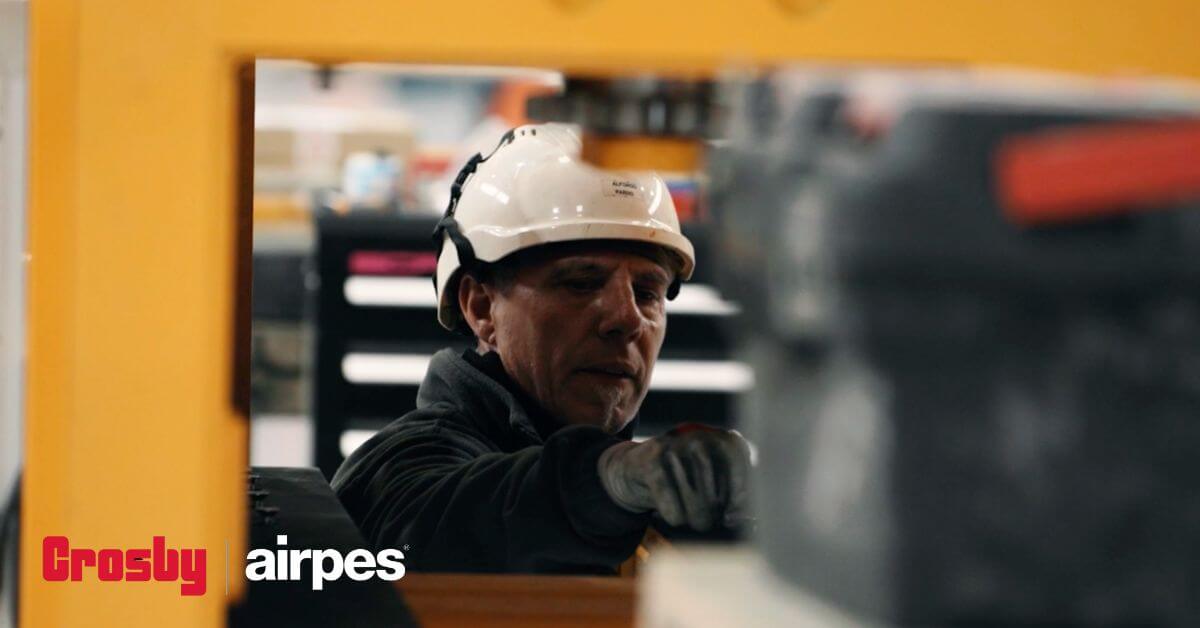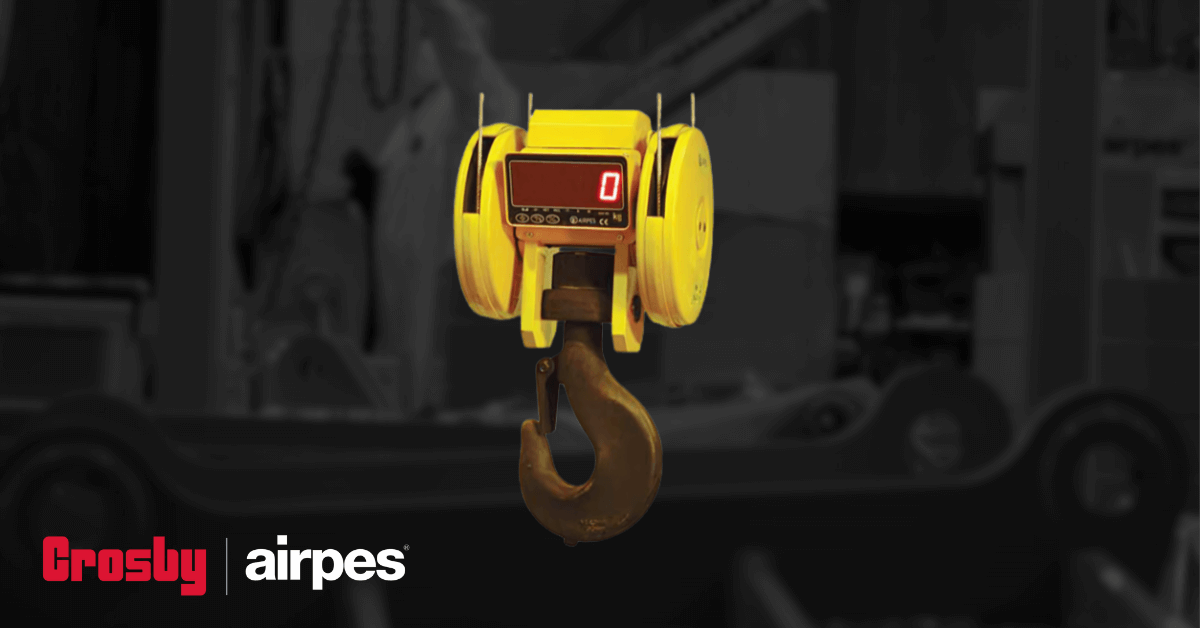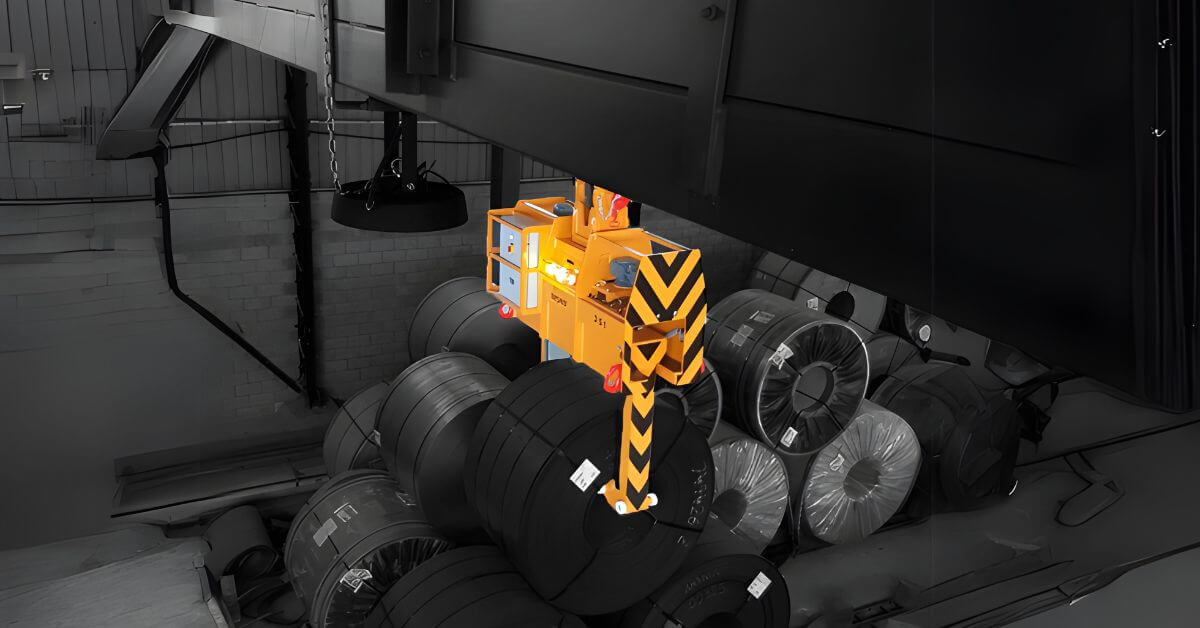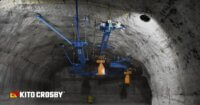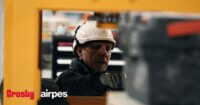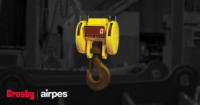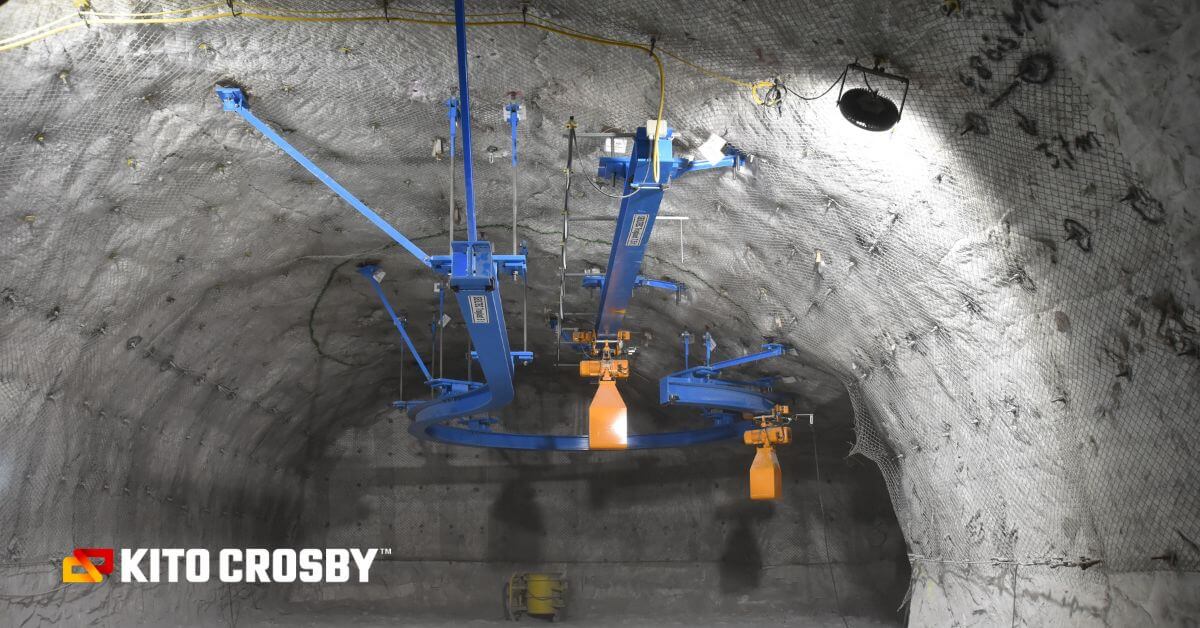
Monorail cranes are specialized material handling systems designed for efficient movement in various industrial environments. They consist of a single rail with a trolley that carries loads while moving along the rail. These cranes are known for their space-saving design and versatility in load handling. They can also be tailored in terms of shape and track, allowing also for curved sections. Understanding their advantages and disadvantages is crucial for determining their best applications in manufacturing, storage, and other settings.
Understanding monorail cranes
Monorail cranes can be essential tools in the modern material handling sector, offering unique advantages in various industrial environments. Let’s check their definitions and key characteristics, highlighting their structures, designs, and common applications.
What are monorail cranes?
Monorail cranes are lifting systems that consist of a single rail mounted above the working area, typically on a ceiling or structural supports.
A trolley moves along the rail, carrying a hoist or other lifting mechanism that the company needs to have installed on the system. Typically, the configuration of a monorail crane -simple and agile- allows for efficient movement of loads across a designated path, even with curved sections, making them a suitable choice for locations where space is at a premium.
Key features of monorail cranes
Structure and Design
The structure of a monorail crane is relatively simple compared to other crane types. It consists primarily of a single rail that can be installed in straight sections or configured with curves and inclines to meet specific operational needs. This flexibility allows for tailored solutions suited to varying industrial settings.
Common Applications
Monorail cranes are utilized in several industries due to their versatility. Some of the most common applications include:
- Manufacturing Facilities: Used for transporting components along assembly lines.
- Warehousing: Facilitates efficient load handling of pallets and boxes.
- Automotive Industry: Aids in moving car parts during production processes.
- Construction Sites: Utilized for lifting materials in confined spaces.
Note: monorail cranes can also be found on bridge cranes and gantry cranes, but in this case, we are talking about heavy-duty cranes.
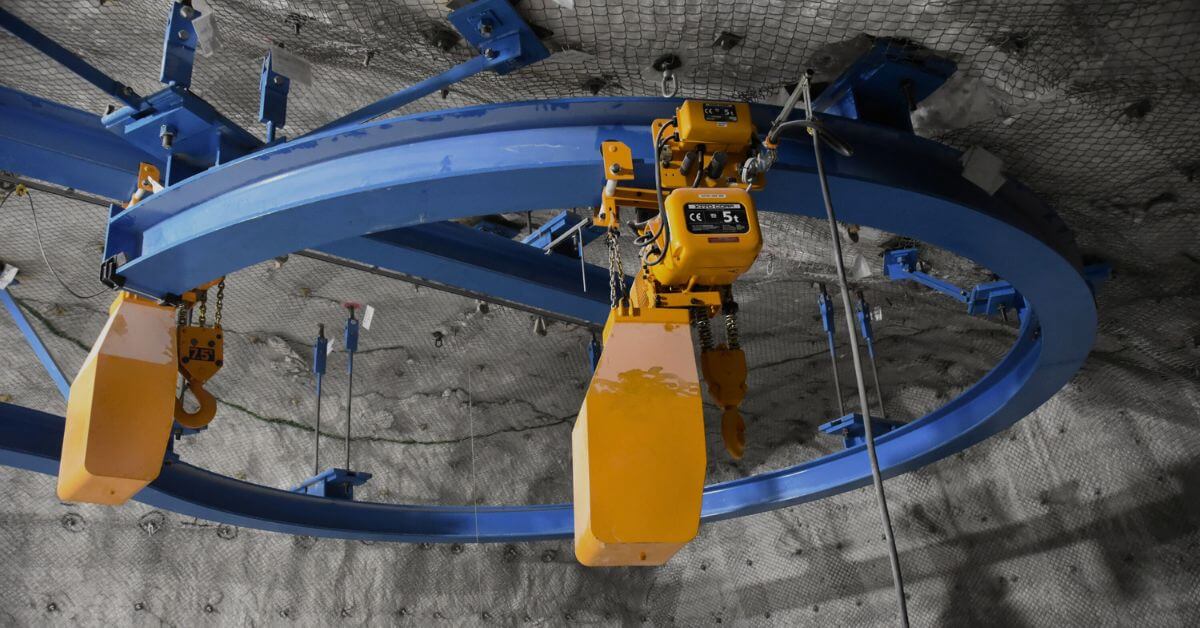
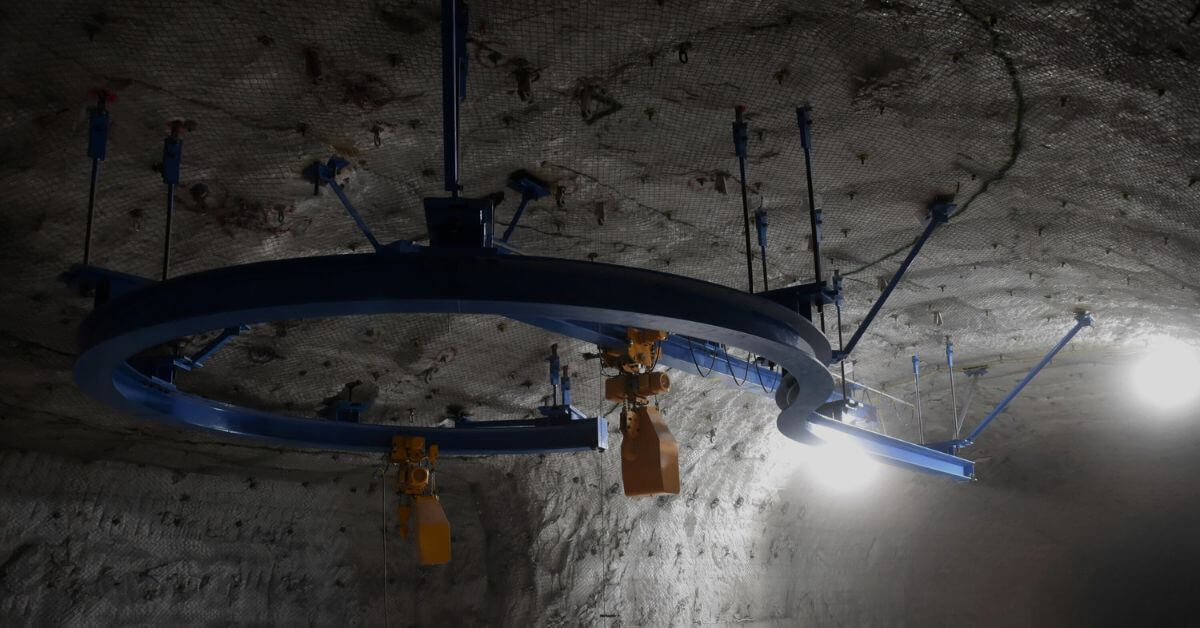
Monorail with curve in salt mining application with ER2 electric chain hoist with motor trolley and steel chain container
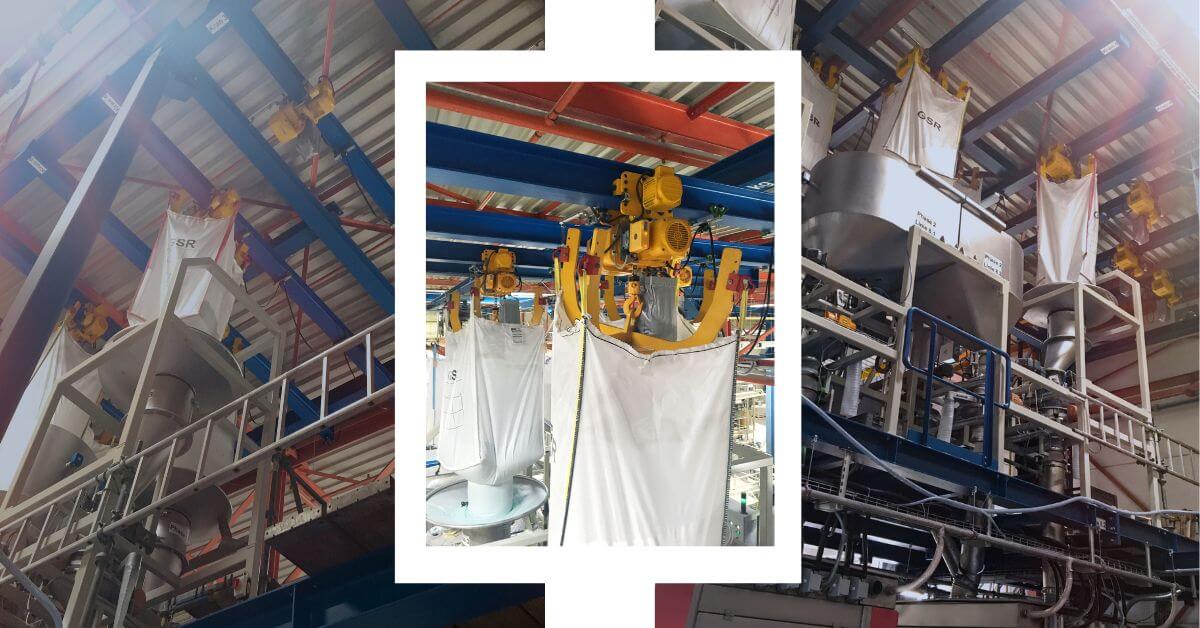
Big bag handling with monorails and ER2 electric chain hoist with motor trolley and radio remote control
Pros of using monorail cranes
Monorail cranes provide several advantages that make them suitable for various industrial applications.
Space efficiency
One of the standout benefits of monorail cranes is their ability to operate in limited spaces. Mounted on overhead structures, they do not require ground space, which is crucial in environments where floor area is at a premium. This design allows organizations to maximize their operational footprint while maintaining safe pathways throughout the workspace.
Versatile load handling
Monorail cranes are highly adaptable for transporting different types of loads. Their design allows for smooth and efficient movement across a set path, making them ideal for:
- Transporting materials between workstations.
- Moving components along assembly lines.
- Facilitating quick load exchanges without disrupting workflow.
This versatility is particularly beneficial in manufacturing and warehousing situations where diverse handling needs arise.
Cost-Effectiveness
Compared to more complex lifting systems, monorail cranes often come with lower initial costs. Their simpler structure reduces both manufacturing and installation expenses. Additionally, maintenance costs can remain manageable, especially with regular upkeep, making them a financially attractive choice compared to other more complex types of cranes.
Allows curved sections
Monorail cranes allow for curved sections, so the trolley can make turns and divertions depending on the shape of the building or the working area. This also allows the load to be transported into another room by following the desired path.
Allows the installation of more than one trolley
Monorail cranes that follow a single path, and in the case of a circular path that ends up where it started, allow the installation of more than one trolley to handle loads, so two or more loads can be moved along the rail at the same time.
Customization and automation options
Monorail cranes can be tailored to meet specific operational needs through various customization options, and Crosby-Airpes can help you with that.
This includes:
- Modifying rail configurations for unique workspace layouts.
- Incorporating safety features like overload alarms, automatic stops, and other security sensors.
- Integrating automation technologies to enhance productivity in larger setups.
- Converting it into a remote-controlled lifting device
Such flexibility ensures that businesses can adapt their material handling systems to changing demands and improve overall efficiency.
Cons of monorail cranes
The lifting device that fits every situation doesn’t exist, so despite their many advantages, monorail cranes also come with specific drawbacks.
Limited load capacity
Monorail cranes generally have a limited load capacity compared to other more capable lifting devices. This limitation can appear especially on monorail cranes that are attached to the ceiling of the building. In scenarios where larger loads are common, companies may need to explore alternative lifting solutions.
Restricted lateral movement
Another consideration is the restricted lateral movement. Monorail systems are designed primarily for linear travel along the rail, making it difficult to navigate loads laterally. If a project requires substantial side-to-side movement, a monorail crane will probably fail to deliver what is needed and other crane types may be more suitable for those needs.
Roof dependency
Installation of monorail cranes heavily relies on the structural integrity of the building’s roof, while bridge cranes installed on pillars (even if these bridge cranes are monorail) can be designed to handle very heavy loads (in order of tenths of tons).
If the roof cannot support the weight and functionality of the crane, additional reinforcements will be needed. This dependency on existing architecture can lead to increased installation costs.
What are the best use cases for monorail cranes?
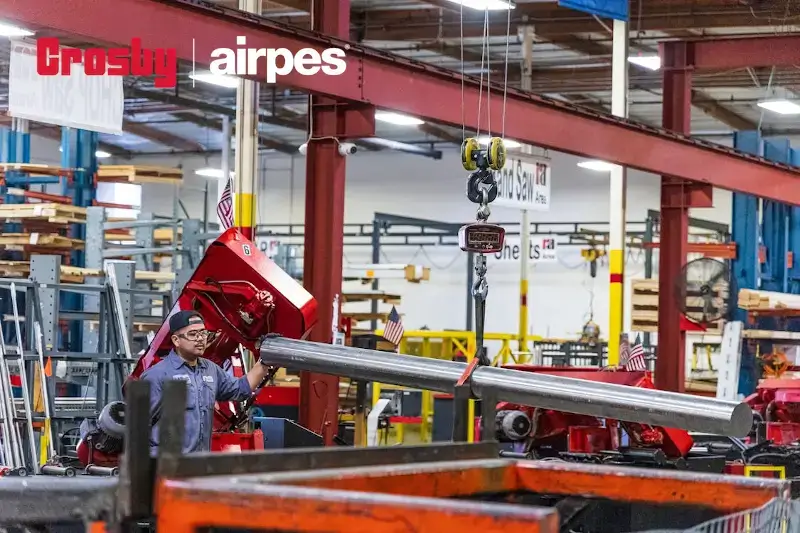
Monorail crane with a weighing device inside a factory
Monorail cranes are particularly well-suited for environments where space constraints are critical, and load handling requirements are small in weight. Their design allows for efficient operation in a variety of settings. Let’s check them out.
Manufacturing and assembly lines
For assembly lines, monorail carnes enhance productivity by facilitating the smooth transport of components between workstations.
Storage facilities
Within storage facilities, monorail cranes prove beneficial for organizing and retrieving inventory. Their ability to operate overhead allows for effective use of vertical space.
Comparing monorail cranes with other crane types
Each type of crane has unique features and applications that cater to various industrial needs.
Gantry cranes
Gantry cranes are a versatile solution in material handling, characterized by their ability to move along tracks or a fixed path. Their design typically features two vertical supports and a horizontal beam to lift and move loads.
A gantry crane can be a good option to a monorail crane if you need to move heavier loads, the rail can’t be hanging from the building’s roof/ceiling, but you have space for the movement of the whole system.
Overhead cranes
These cranes are used primarily in indoor settings and are designed to maximize overhead space for material handling. They can be mounted on the roof structure or suspended from beams.
Overhead cranes typically feature a bridge that runs on elevated rails, allowing for heavier lifting capacities.
Faq’s about monorail cranes
Here are the answers to some common questions we receive about monorail cranes.
What is a monorail crane?
Monorail cranes are lifting systems that consist of a single rail mounted above the working area, typically attached to the ceiling or with structural supports. Usually they have only a trolley -but can have more- that moves along the rail.
What is the difference between a monorail crane and an overhead crane?
An overhead crane moves in the three AXIS of the space (XYZ) while a monorail crane only moves in two AXIS (XY). As well, overhead cranes usually have more loading capacity compared to monorail cranes.
What is the capacity of a monorail crane?
Since the structure of a monorail crane usually is attached to the ceiling or roof structure, is limited by the load capacity of this structure. Loading capacity is not the reason to install a monorail crane. If that’s your case you should opt for an overhead crane or gantry crane.
We are your partner for improving and modernizing your monorail crane
At Crosby-Airpes we have extensive experience in designing tailored lifting solutions for any type of crane or elevation system.
If you have a monorail crane we can help you with upgrades that can enhance functionality and ensure compliance with contemporary safety standards.
Some of the key upgrades that we can help you implement in your monorail crane include:
- Automation: streamline processes, reduce manual labor and enhance productivity through better load management.
- Remote Control Systems: improve precision in load handling and enable remote operation capabilities.
- Safety Enhancements: added protection for operators and materials, minimizing the risk of accidents.
- Predictive Maintenance Tools and Repairings: special software and IoT technologies can enhance maintenance scheduling, reducing downtime and increasing lifespan.

